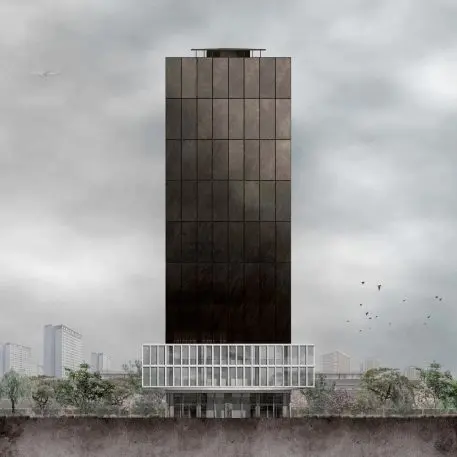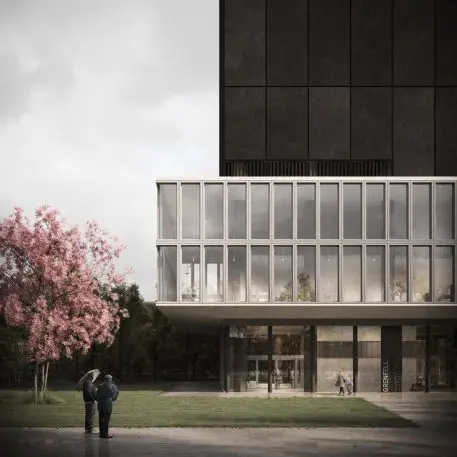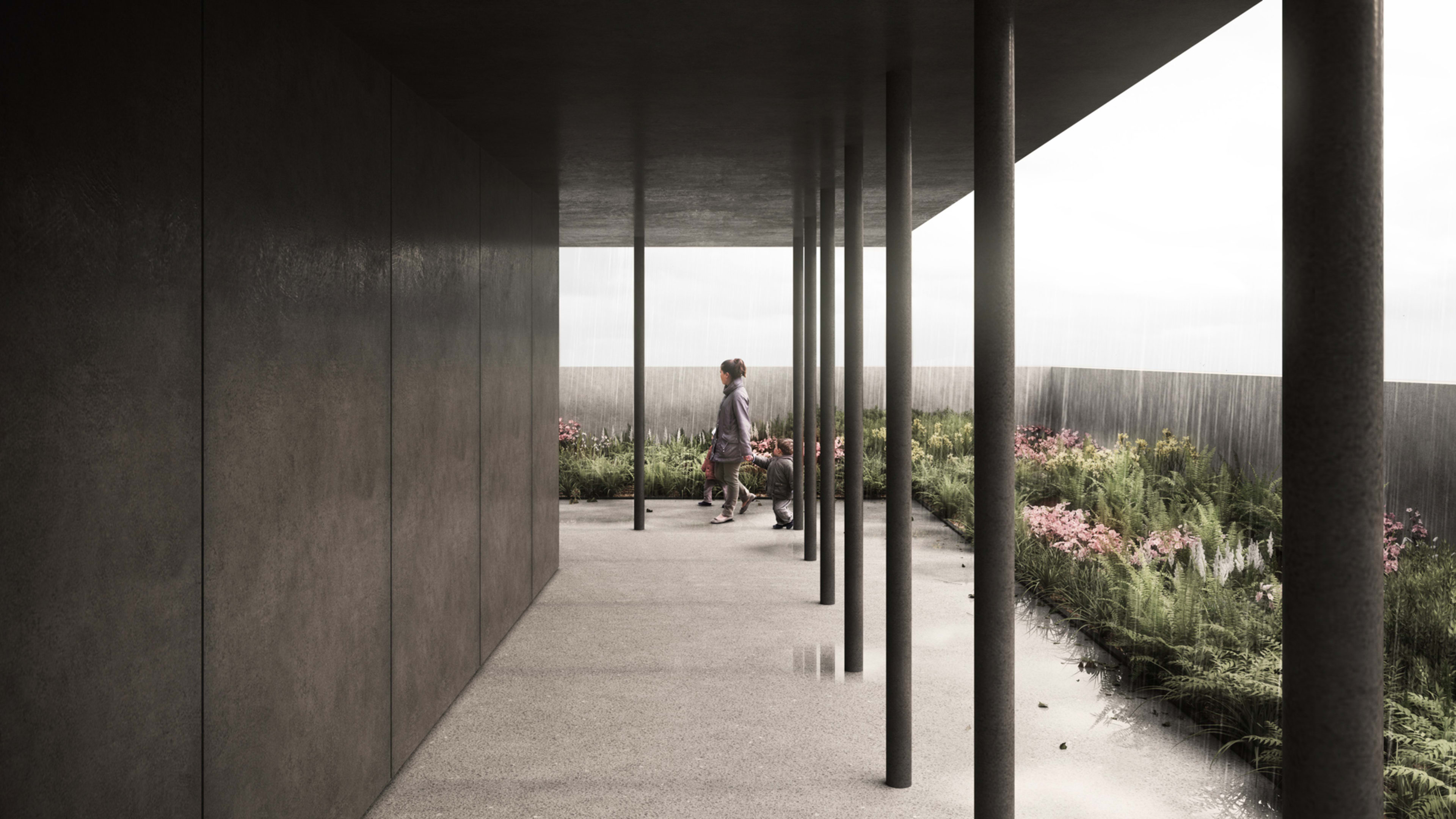A year after a devastating fire broke out in West London’s Grenfell Tower, taking 72 lives and injuring scores of residents as it burned for over 60 hours at a blazing 1,800 degrees, a local architecture firm, JAA Studio, has proposed a stark memorial—one that keeps the haunting, charred remains of the structure intact, in a powerful vision of remembrance of a tragedy riddled with controversy.
Unveiled yesterday on Building Design, JAA’s speculative proposal, Grenfell Tower: In Memoriam, calls for a preservation of the tower, with the addition of black concrete cladding on the exterior, transforming it into a memorial with an opaque facade. A garden and terrace would be added to the roof, and a light installation would be placed in apartment No. 16, where the fire first began. The proposal calls for all other floors to remain unused, with the exception of the lowest four, which would be repurposed and renovated for community uses, including sporting facilities and a gallery dedicated to the fire’s victims and those affected.

While the planning and construction of the memorial remain tentative—and the future of the site is still undetermined—the neighborhood’s district councils, residents, and survivors have formed a working group to begin setting plans for a memorial into motion.
The architects are careful to point out that their design is purely meant to help the conversation around the future of the site. “This is not a real project and should not be taken as such: It is a discussion piece to provoke conversation about what happens next. We feel the existing building has a significant level of importance following the fire, not just to those directly affected but also for the city,” cautions Alessio Cuozzo, JAA’s director, in an email to Fast Company.
“We believe the tower will likely be demolished due to political pressure and a desire to forget, but we believe this is a mistake,” he continues. “We believe the building is important in helping us remember what happened and to improve how the industry procures construction projects.”

Widely reported as the worst residential fire to take place in the U.K. since World War II, and among the deadliest in recent history, the Grenfell Tower fire was caused directly by failures of design. Sparked by a faulty Hotpoint refrigerator in a unit on the fourth floor, the blaze rapidly spread due to the building’s thermal cladding and insulation that, under investigation, was found to be highly flammable.
Earlier this summer, the BBC uncovered documents showing that contractors were asked by the district’s council to refurbish the building’s existing zinc cladding in 2014 with “a more economical aluminum version,” a far less efficient fire-resistant material that saved the council upwards of $375,000. In the U.S., shares of Arcona (formerly known as Alcoa) dropped after the company was identified as the source of the aluminum composite.
As GQ reported, the building also had no audible fire alarm, nor a sprinkler system—an oversight of the city’s zoning laws, which only require new buildings taller than 100 feet to be equipped with them—and was met with a poor emergency response rate. Residents of Grenfell Tower, a social housing complex, comprised a diverse, low-income, and largely immigrant mix of families, workers, and children. The fire called into question how Kensington and Chelsea, among London’s wealthiest boroughs with extreme pockets of disparity in wealth and poverty, was managing its public housing. A 2011 article from the Guardian reported that nearly 75% of the city’s social housing blocks were potentially vulnerable in regards to fire safety.

By preserving the remains of the Grenfell Tower fire, JAA’s speculative proposal is as much an homage to the victims as it is a glaring, shaming reminder to those who could have easily prevented the tragedy from ever happening. And while the design remains a concept, and may never be built—it’s a sentiment that keeps the reality of the outcome prescient in our minds.
“The proposal for a monument is difficult as all tragedies are. We understand that many people will have different views, and we expect some of these to be quite aggressive,” Cuozzo says. “We worry that if someone doesn’t start what is a difficult discussion to have, then it will be too late. It would be a tragedy in itself to be left with a water fountain and a plaque as a memorial.”
As JAA Studio’s team stated: “We cannot afford to forget—the city needs its scars, and it learns from them, just as a child does.”
Recognize your brand’s excellence by applying to this year’s Brands That Matter Awards before the early-rate deadline, May 3.
